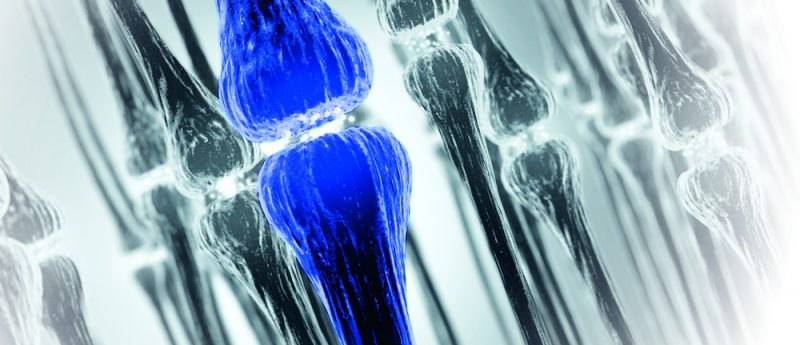Parkinson’s disease researchers overcome reprogramming obstacle to dopamine neuron generation

Parkinson’s disease researchers discover a way to more efficiently reprogram the genome of skin cells in order to generate dopamine neurons for the development of Parkinson’s disease therapies.
Cell therapy using donor or repaired cells to treat Parkinson’s disease has potential for a major clinical impact, but repairing patient cells has proved challenging — for example, not generating sufficient yield during reprogramming — and cell types such as fetal stem cells have issues in ethical considerations and acquiring sufficient number of cells.
Researchers at the Jacobs School of Medicine and Biomedical Sciences at the University at Buffalo have developed a faster process for converting skin cells into dopamine neurons by identifying a factor that was negatively impacting conversion. “We found that p53 tries to maintain the status quo in a cell, it guards against changes from one cell type to another,” explained Jian Feng, senior author and professor in the Department of Physiology and Biophysics in the Jacobs School of Medicine and Biomedical Sciences at UB. “We found that p53 acts as a kind of gatekeeper protein to prevent conversion into another type of cell. Once we lowered the expression of p53, then things got interesting: We were able to reprogram the fibroblasts into neurons much more easily.”
Decreasing p53 at the right time of cell cycle allowed easy conversion of skin cells into dopamine neurons, with transcription factor combinations discovered in previous studies. These manipulations turn on the expression of Tet1, a DNA modification enzyme that changes how the genome is read. “Our method is faster and much more efficient than previously developed ones,” commented Feng. “The best previous method could take two weeks to produce 5 percent dopamine neurons. With ours, we got 60 percent dopamine neurons in ten days.”
The approach could be applied to other cells and impact basic biology. “If we can identify transcription factor combinations that control which genes are turned on and off, we can change how the genome is being read. We might be able to play with the system more quickly and we might be able to generate tissues similar to those in the body, even brain tissue,” stated Feng.
The researchers have carried out many experiments to prove that these neurons are functional mid-brain dopaminergic neurons, the type lost in Parkinson’s disease. Researchers could therefore use these cells to generate patient-specific neurons in a dish for transplantation into patients, or for screening new treatments for Parkinson’s disease.
Sources: www.buffalo.edu/news/releases/2015/11/054.html; Jiang H, Xu Z, Zhong P et al. Cell cycle and p53 gate the direct conversion of human fibroblasts to dopaminergic neurons. Nat. Comm. 6, 10100 (2015).